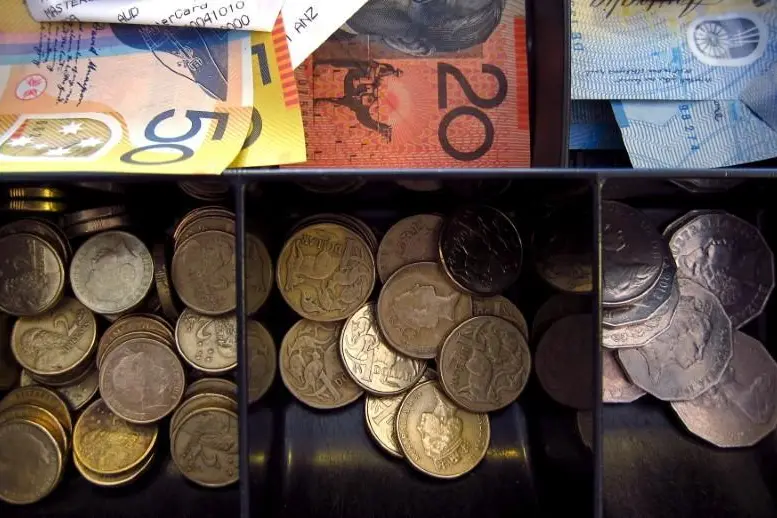PHOTO
Australian dollar notes and coins can be seen in a cash register at a store in Sydney, Australia, February 11, 2016. David Gray, Reuters
The Australian dollar slipped on Tuesday after the country's central bank held rates steady as expected but tempered its conditional tightening bias, reinforcing market wagers that the next move would be an easing of policy.
The news came as the Bank of Japan ended eight years of negative interest rates and nudged the yen higher on the Aussie, adding to the impact.
It was no surprise that the Reserve Bank of Australia (RBA) kept rates at a 12-year high of 4.35%, but it took a slightly dovish turn by dropping a warning that a further hike could not be ruled out.
Instead, the central bank board said it "was not ruling anything in or out" on future policy.
Futures imply around a 43% chance of a first cut in June, rising to 74% for August. The market now has 44 basis points of easing priced in for all of 2024, compared to 38 basis points ahead of the announcement.
"Our own view is that inflation will moderate more rapidly than the Bank is anticipating, with inflation set to fall within the RBA's 2-3% target band by Q3," said Marcel Thieliant, head of Asia-Pacific economics at Capital Economics.
"Accordingly, we're sticking to our forecast that the Bank will start to cut interest rates by August, with risks tilted towards later easing."
The Aussie fell about 0.4% to a two-week low of $0.6533 , having snapped support at $0.6552. The break opens the way for a retreat to $0.6477, while resistance is up at $0.6638.
The kiwi dollar followed down to $0.6064, having now fallen for three sessions in a row. The breach of support at $0.6070 risks a return to a major bulwark around $0.6040.
Australian three-year bond futures jumped 7 ticks to 96.370. Yields on 10-year bonds eased 4 basis points to 4.10%, having jumped 16 basis points last week as U.S. Treasuries were sold off.
The prior rise in yields had been largely driven by expectations for U.S. rates as sticky inflation there saw the market push out a Federal Reserve easing from May to June, and maybe even July.
The trend was echoed in New Zealand, where markets have given up on a July easing in favour of August.
That could change should data on gross domestic product due on Thursday veer from the expected minor increase of 0.1%. In particular, a negative result would put the country back in technical recession and argue for an earlier rate cut. (Reporting by Wayne Cole; Editing by Jamie Freed)





















